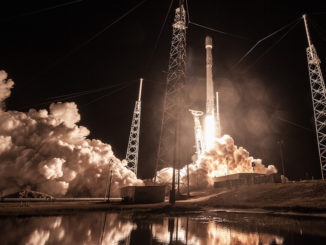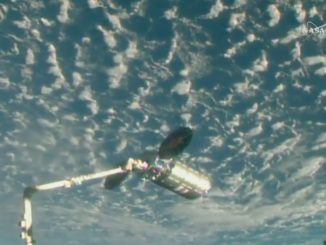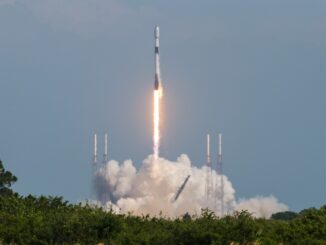EDITOR’ S NOTE: Updated at 6:15 p.m. EST (2315 GMT) after SpaceX confirmed a launch delay to Wednesday, Jan. 29.
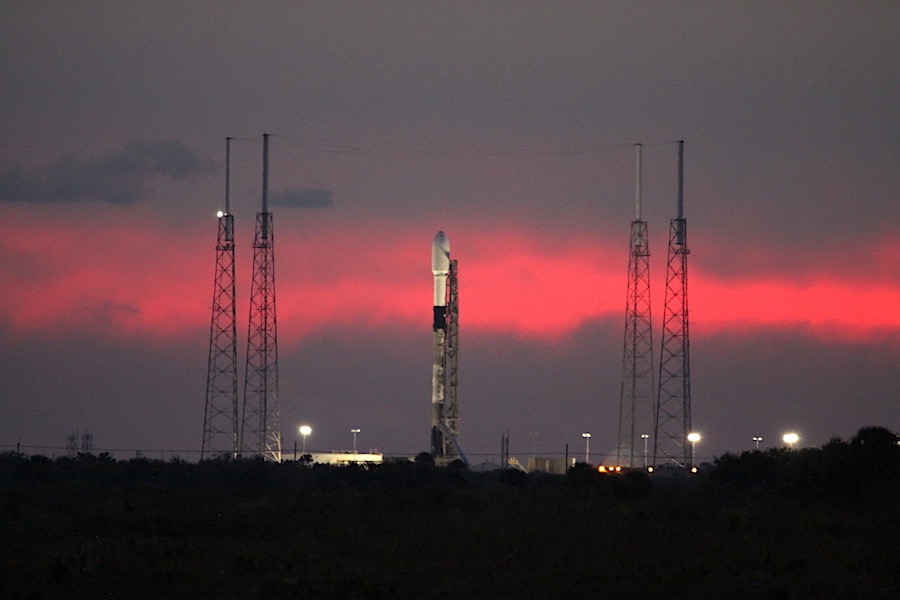
SpaceX called off a scheduled launch of a Falcon 9 rocket about a half-hour before liftoff from Cape Canaveral Monday due to strong upper level winds, and officials aim to try again to send 60 Starlink Internet satellites into orbit Wednesday after bypassing a planned launch attempt Tuesday due to poor weather in the offshore booster recovery area.
The 229-foot-tall (70-meter) Falcon 9 rocket was counting down to liftoff at 9:49 a.m. EST (1449 GMT) Monday with the next batch of satellites for SpaceX’s Starlink global Internet service. But thick clouds and brisk winds aloft threatened to exceed the rocket’s launch weather criteria.
In the end, SpaceX determined the upper level winds — which gusted as high as 138 knots (158 mph) between 35,000 and 40,000 feet — were too strong for the Falcon 9 to safely climb through the atmosphere and into space Monday.
SpaceX confirmed in a tweet that teams were standing down from Monday’s launch opportunity, and officials scheduled another launch attempt Tuesday at 9:28 a.m. EST (1428 GMT) from Cape Canaveral’s Complex 40 launch pad.
But SpaceX tweeted later Monday that the launch would be delayed to Wednesday at 9:06 a.m. EST (1406 GMT) due to poor weather in the Atlantic Ocean, where the company’s drone ship “Of Course I Still Love You” and twin fairing retrieval boats “Ms. Chief” and “Ms. Tree” will try to recover the Falcon 9’s first stage booster and two-piece payload fairing.
The two-day schedule slip is the latest in a series of weather delays that have prevented SpaceX from sending the Falcon 9 rocket skyward since last week. SpaceX delayed the flight from Jan. 21 to wait for improved conditions at sea last week.
The Ms. Chief and Ms. Tree vessels are equipped with giant nets to catch the fairing shells as they descend under parafoils. SpaceX has reused the fairing after retrieving the hardware from the sea, but catching them in the nets prevents the shells from being drenched in salt water. That eases their refurbishment and reuse, SpaceX says.
The first stage of the Falcon 9 rocket slated to launch this week is designated B1051 in SpaceX’s fleet of boosters.
This will be the third flight of the B1051 vehicle, following a launch from pad 39A at NASA’s Kennedy Space Center on March 2, 2019, with SpaceX’s first Crew Dragon spaceship on an unpiloted test flight to the International Space Station.
The booster was recovered on SpaceX’s drone ship in the Atlantic Ocean and reused June 12, 2019, on the launch of Canada’s Radarsat Constellation Mission from Vandenberg Air Force Base in California.
After another landing on a SpaceX recovery ship, the booster is set for this third trip to the edge of space and back with SpaceX’s fourth batch of 60 Starlink broadband satellites.
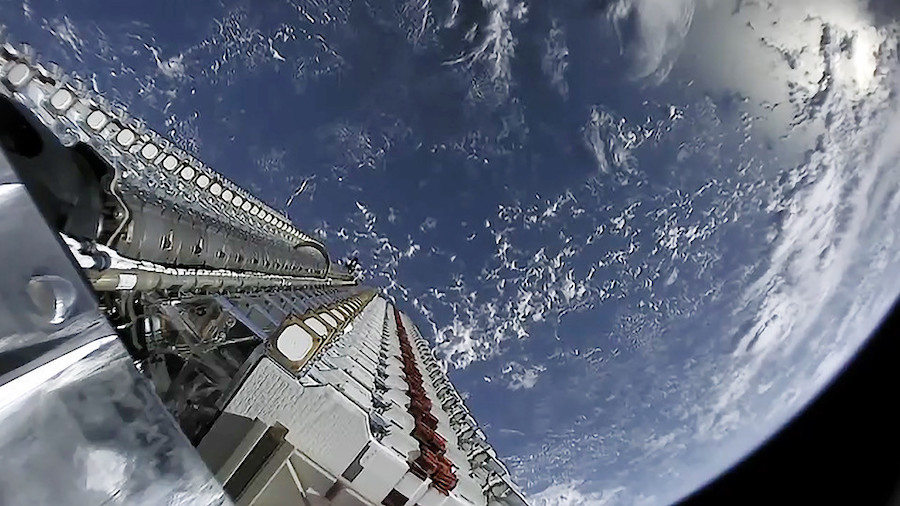
It will take approximately one hour for SpaceX’s Falcon 9 rocket to deploy 60 Starlink satellites into orbit.
The Falcon 9 will head northeast from Cape Canaveral over the Atlantic Ocean to place the 60 Starlink satellites into a circular orbit around 180 miles (290 kilometers) above Earth, with an inclination of about 53 degrees to the equator.
The satellites will use their ion thrusters to maneuver to a higher altitude for testing. The flat-panel satellites will finally proceed to an operational orbit approximately 341 miles (550 kilometers) above Earth.
With a successful flight Wednesday, SpaceX will have deployed 240 Starlink satellites on three dedicated missions since last May.
SpaceX plans to operate the an initial block of 1,584 Starlink satellites to provide worldwide broadband service for consumers, telecom operators, airplanes and ships. The U.S. military is also a likely customer for the Starlink network, and the Defense Department has already signed a contract with SpaceX to test broadband links through the Starlink fleet.
SpaceX, founded by billionaire Elon Musk, has regulatory approval from the Federal Communications Commission to eventually field a fleet of up to 12,000 small Starlink broadband stations.
Company officials say 24 launches are needed to provide global broadband service through the Starlink service. But SpaceX could provide an interim level of service over higher latitude regions of the Earth later this year, once SpaceX has launched around 720 satellites on 12 Falcon 9 flights.
Email the author.
Follow Stephen Clark on Twitter: @StephenClark1.

